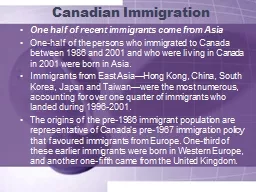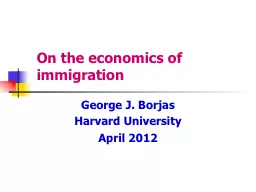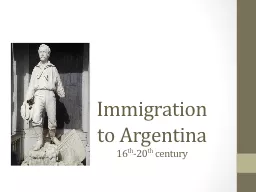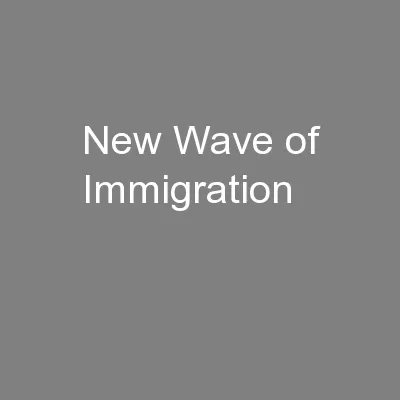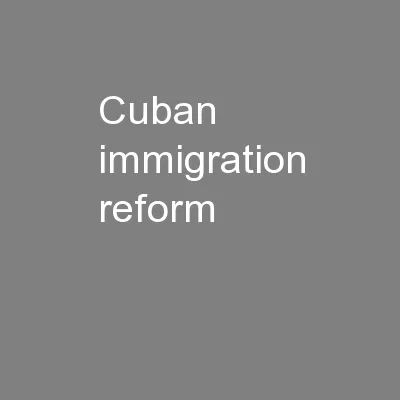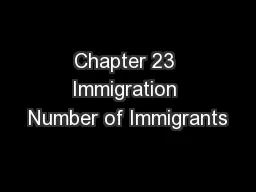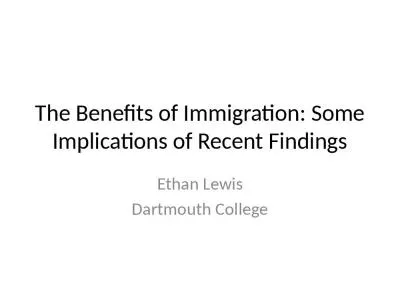PPT-Canadian Immigration One half of recent immigrants come from Asia
Author : yoshiko-marsland | Published Date : 2018-11-09
Onehalf of the persons who immigrated to Canada between 1986 and 2001 and who were living in Canada in 2001 were born in Asia Immigrants from East AsiaHong Kong
Presentation Embed Code
Download Presentation
Download Presentation The PPT/PDF document "Canadian Immigration One half of recent ..." is the property of its rightful owner. Permission is granted to download and print the materials on this website for personal, non-commercial use only, and to display it on your personal computer provided you do not modify the materials and that you retain all copyright notices contained in the materials. By downloading content from our website, you accept the terms of this agreement.
Canadian Immigration One half of recent immigrants come from Asia: Transcript
Download Rules Of Document
"Canadian Immigration One half of recent immigrants come from Asia"The content belongs to its owner. You may download and print it for personal use, without modification, and keep all copyright notices. By downloading, you agree to these terms.
Related Documents

